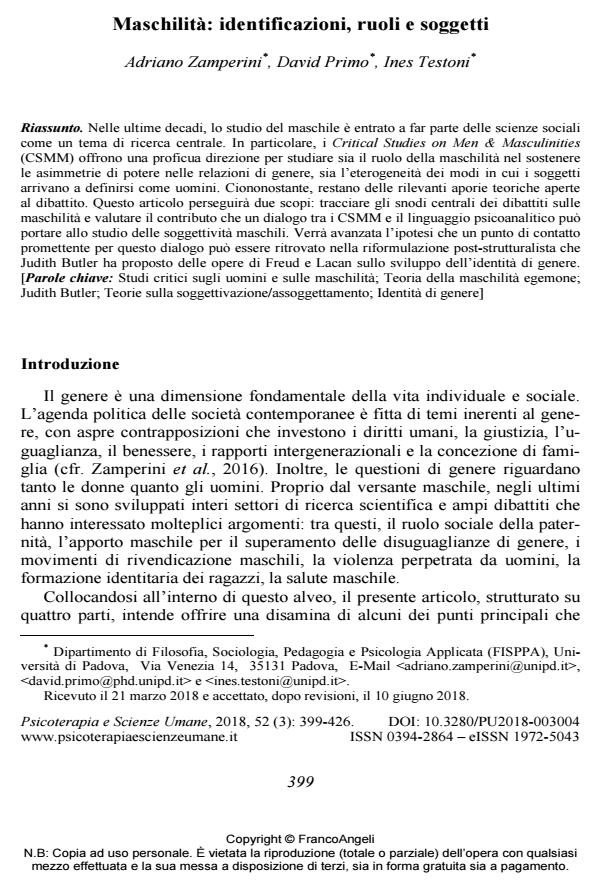Masculinity: Identification, roles, and subjects
Journal title PSICOTERAPIA E SCIENZE UMANE
Author/s Adriano Zamperini, David Primo, Ines Testoni
Publishing Year 2018 Issue 2018/3
Language Italian Pages 28 P. 399-426 File size 207 KB
DOI 10.3280/PU2018-003004
DOI is like a bar code for intellectual property: to have more infomation
click here
Below, you can see the article first page
If you want to buy this article in PDF format, you can do it, following the instructions to buy download credits

FrancoAngeli is member of Publishers International Linking Association, Inc (PILA), a not-for-profit association which run the CrossRef service enabling links to and from online scholarly content.
Over the last decades, the study of the Masculine has entered in the field of social sciences as a central research topic. In particular, Critical Studies on Men & Masculinities (CSMM) provide insightful tools to understand both the role of masculinity in sustaining asymmetric power dynamics in gender relations, and the heterogeneous ways in which subjects get to define themselves as men. Nevertheless, there are still numerous theoretical aporias open to debate. This paper aims both at summarizing the focal points of the debates on masculinities, and at assessing the contribution of a dialogue between CSMM and psychoanalytic language in the study of men’s subjectivities. A promising point of contact to make this dialogue possible is Judith Butler’s post-structuralist rearticulation of Freud’s and Lacan’s works about the development of sexual identity.
Keywords: Critical Studies on Men and Masculinities (CSMM); Hegemonic masculinity theory; Judith Butler; Theories in subjection; Gender identity
Adriano Zamperini, David Primo, Ines Testoni, Maschilità: identificazioni, ruoli e soggetti in "PSICOTERAPIA E SCIENZE UMANE" 3/2018, pp 399-426, DOI: 10.3280/PU2018-003004